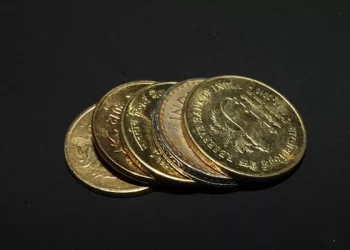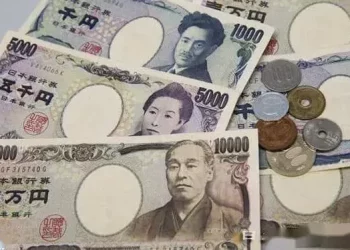The issuance of banknotes and minting of coins are fundamental responsibilities of a nation’s financial system. These physical forms of money not only facilitate everyday transactions but also signify trust in the country’s economy. In the United Kingdom, the authority to produce and circulate currency is split across institutions with unique roles, specifically the Bank of England and The Royal Mint. This article will examine who issues banknotes and mints coins in the UK, explaining each institution’s distinct responsibilities, the underlying mechanisms of currency production, the role of these entities in economic stability, and the broader implications of their work on the UK economy.
Historical Overview of Currency in the UK
To understand the current structure of currency issuance in the UK, it is beneficial to consider the history of money in the country. The issuance of banknotes and coins in the UK has evolved significantly since the 17th century, reflecting changes in technology, security requirements, and economic policy.
The Bank of England’s Foundation: The Bank of England was established in 1694 as a private bank intended to fund government debt. It soon took on the function of issuing banknotes, which quickly became an essential feature of the economy, as coins alone could not sufficiently meet the needs of a growing financial system.
The Royal Mint’s Legacy: The Royal Mint, founded in 886 AD, has been responsible for minting coins for over a millennium. Originally located in the Tower of London, it now operates as a modern mint in Llantrisant, Wales. The Mint was initially responsible for minting the king’s currency and later became a key institution in producing coins for both the UK and, subsequently, for other countries as well.
Legal Authority and Reforms: The Currency and Bank Notes Act of 1928 gave the Bank of England the exclusive right to issue banknotes in England and Wales. Over time, the legal frameworks evolved to distinguish the roles of currency issuance among England, Scotland, and Northern Ireland, with the Bank of England overseeing regulations.
The Role of the Bank of England in Issuing Banknotes
The Bank of England plays the central role in issuing banknotes in the UK. Its responsibilities are distinct, including determining the denominations of notes in circulation, designing and producing secure notes, and ensuring a stable supply in the economy.
Issuance Authority: The Bank of England has the exclusive right to issue banknotes in England and Wales, a role that it undertakes with stringent control measures to ensure public trust. Unlike many countries where currency issuance is centralized, Scotland and Northern Ireland also have banks that issue their own notes, under strict regulation by the Bank of England.
Banknote Design and Security Features: A vital part of the Bank’s role is to ensure that notes are difficult to counterfeit. This includes incorporating advanced security features such as holograms, watermarks, microprinting, and special inks. Each new series of banknotes introduces enhanced security elements to combat counterfeiting attempts, thus safeguarding the public and maintaining confidence in the currency.
Denominations in Circulation: The Bank of England issues notes in denominations of £5, £10, £20, and £50. It occasionally reviews and updates these denominations based on the needs of the economy and trends in consumer behavior. The decision to introduce polymer notes was part of the Bank’s approach to improving the durability and security of UK banknotes.
Issuing and Withdrawing Banknotes: The Bank of England not only introduces new notes but also withdraws old ones. This allows it to replace outdated notes with more secure versions. For example, paper banknotes were gradually phased out in favor of polymer notes, which are more durable and secure. Withdrawn notes are collected from banks, retailers, and other institutions, then destroyed or recycled in an environmentally responsible manner.
The Role of The Royal Mint in Coin Production
While the Bank of England handles banknotes, The Royal Mint has exclusive authority over the minting of coins for the UK. This division of responsibilities ensures that two specialized institutions focus on their respective domains of currency production.
Minting Authority and Coin Denominations: The Royal Mint is responsible for producing all coins in the UK. It creates a range of denominations, from 1p to £2, as well as commemorative coins and bullion coins for collectors and investors. The Mint also provides coins to other countries, making it one of the leading international suppliers of coinage.
Design and Production Process: The Mint’s design process involves selecting themes and symbols that resonate with UK heritage, culture, and historical milestones. Designs are often chosen through consultation with government bodies, artists, and the public. Once a design is finalized, advanced minting technology and materials are used to produce coins that are both aesthetically pleasing and difficult to counterfeit.
Commemorative Coins: The Royal Mint periodically releases limited-edition commemorative coins that celebrate significant events, such as royal anniversaries or historical figures. These coins are generally not meant for circulation but are instead collected as items of cultural and historical value.
Bullion Coins: In addition to circulating coins, The Royal Mint also produces bullion coins such as the Britannia and the Sovereign, which are popular with investors. Bullion coins are valued for their precious metal content, typically gold or silver, and are traded based on market rates rather than face value.
Regulatory and Economic Implications of Currency Issuance
Currency issuance is not only a technical responsibility but also a matter of national economic policy and regulation. Both the Bank of England and The Royal Mint operate under legislative frameworks that ensure accountability and transparency.
Legislative Oversight: The issuance of currency is regulated under several acts, including the Bank of England Act 1998, which outlines the Bank’s monetary policy responsibilities. The Royal Mint operates as a government-owned company, providing services under contracts that specify requirements for coinage.
Monetary Policy and Inflation Control: Currency issuance can have a direct impact on inflation and monetary policy. The Bank of England controls the supply of money in the economy through various tools, including adjusting interest rates and influencing lending practices. By managing the volume of currency in circulation, the Bank helps stabilize purchasing power and maintain economic stability.
Economic Confidence: Currency reflects national stability. When the public has confidence in the quality and security of banknotes and coins, it translates into broader trust in the economy. The Bank of England and The Royal Mint, through their respective roles, reinforce this confidence by ensuring that all forms of currency are reliable and secure.
Public Demand and Trends: Demand for cash fluctuates based on trends in digital payments, economic conditions, and consumer preferences. Both institutions must respond to these shifts by adjusting the volume of currency produced. For instance, the UK’s movement towards digital payments has reduced cash demand, prompting a review of the future role of physical currency.
Conclusion
The issuance of banknotes and minting of coins in the UK involves two key institutions with specialized responsibilities: the Bank of England and The Royal Mint. Together, they produce currency that supports both everyday transactions and the broader economic stability of the UK. By upholding high standards of security, design, and sustainability, these institutions reinforce public confidence in the monetary system.
As the UK economy moves towards a digital future, the Bank of England and The Royal Mint continue to adapt, ensuring that currency, in its many forms, remains secure, accessible, and relevant.
Related Topics:

























